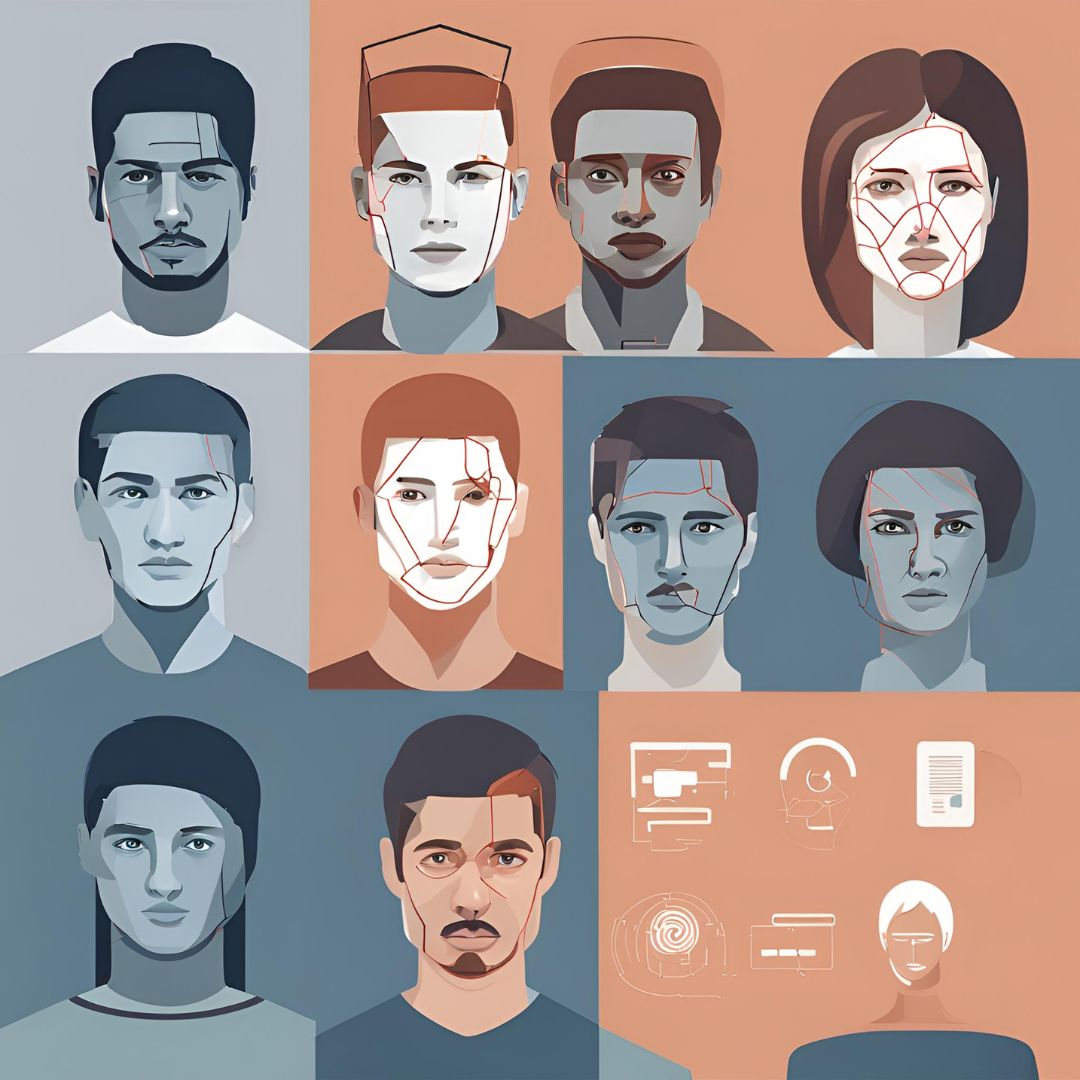Facial detection and facial recognition are terms used to describe video surveillance analytics that aid in identifying and cataloging human faces. The terms are sometimes used interchangeably, but they’re not the same thing. Here is our definitive guide to understanding the differences between facial detection and facial recognition.

Facial Detection Is Data Collection
Facial detection is a feature commonly found among video analytic features. The faces are captured as snapshots with time and date stamps, making it easy to review all people who appear in view of the camera in a certain time frame. This is presented in an interactive thumbnail gallery, where the user can click on any face and review the video footage where they appeared.
Dahua uses two methods of facial detection: picture-stream facial detection and video-stream facial detection. With the picture stream, the camera detects faces and categorizes them, sending data to the backend server. With a video stream, the camera sends images to the backend device, where they are decoded and faces are detected. Facial detection is not capable of identifying individuals; it’s just a method of collecting face snapshots for later manual review.
Facial Attributes Can Be Categorized
Select Dahua cameras and recorders have the facial attributes feature, which builds upon facial detection. The system detects faces in a live video stream and produces determinations of the person’s age, expression, and gender, as well as categorizing distinct features such as whether the person has a beard or is wearing glasses. This lets users filter snapshots by facial attributes.
Facial Recognition Is Identification
Facial recognition uses deep learning algorithms to create positive IDs of individuals. Once face detection technology identifies a human face and captures the image. The image is transformed into a vector object (also called face signature), based on image landmarks. These are the positions of both eyes, the nose, and the two corners of the mouth relative to each other. Facial recognition works in tandem with a database in order for faces to be identified.
Static Database
A static database is a pre-existing database of identified people, images, and metadata. As people pass by the camera, images of their faces are captured and analyzed. If a facial signature matches one in the database, then the system recalls the originally captured image, displays it alongside the new one, and includes any previously inputted identification details of the person such as their name or ID number. A static database is useful in educational environments or office complexes where people entering a restricted area can be matched against student or employee IDs.
Dynamic Database
When facial recognition is implemented with a dynamic database of faces, facial images are captured and analyzed as strangers pass by the camera. Key components are created – the facial signature, associated metadata, and the video record – and all are stored with the facial image.
At this point, the system does not know the person’s identity. But if the same “stranger” later passes by a camera within the system, the newly captured signature is compared to the database. If the new signature matches an existing one (in other words, if the face has already been recorded), the system reports a match. It recalls the originally captured image and displays it alongside the new one.
Dynamic databases can be used in applications where customer service is important, such as recognizing repeat customers and giving them VIP treatment. A grocery chain in the UK is using facial recognition and a dynamic database to alert cashiers when they are working with a customer who has previously been unable to prove they are of legal age to buy alcohol.
In all, facial detection and facial recognition are designed so that video surveillance systems can operate more effectively. It can greatly shorten the video review process, or proactively alert staff when persons of interest appear, whether they be VIPs or violators.

